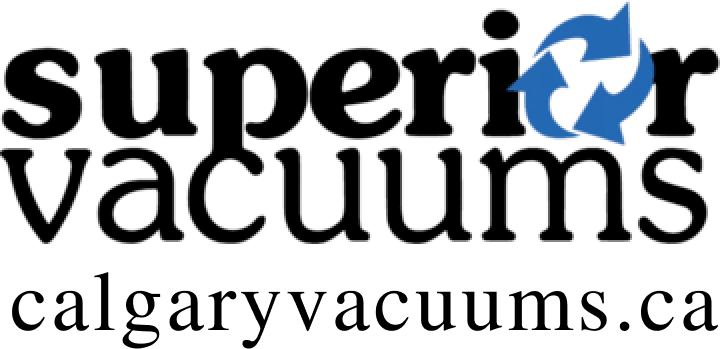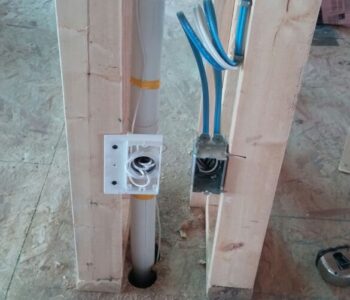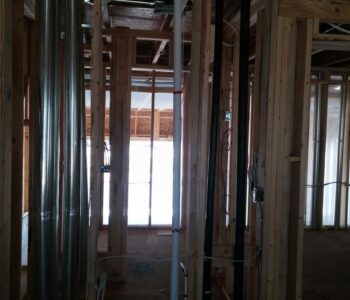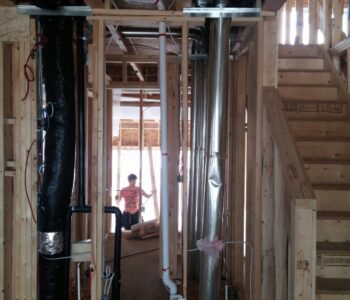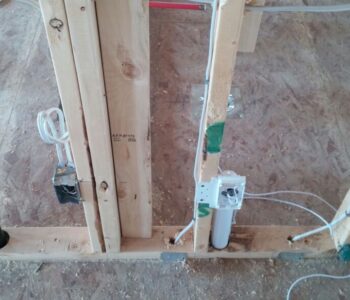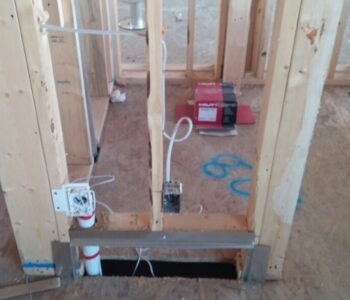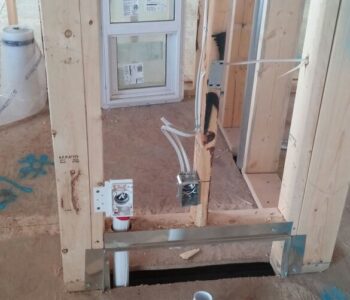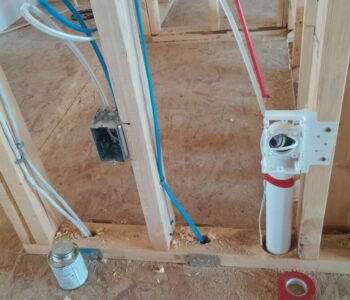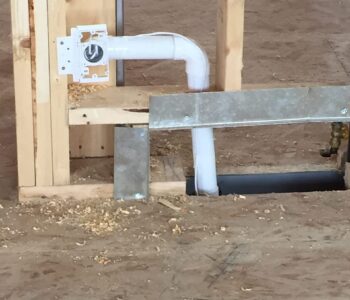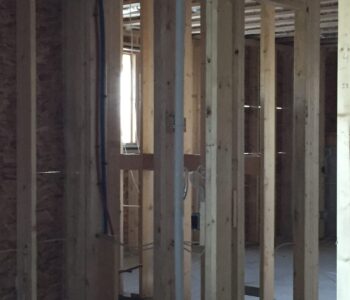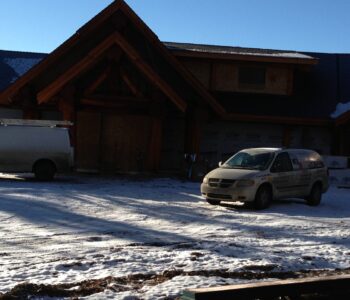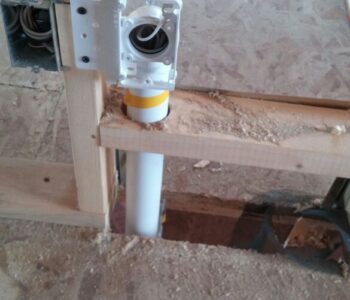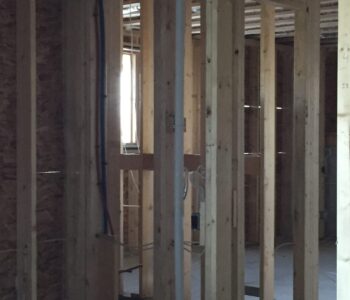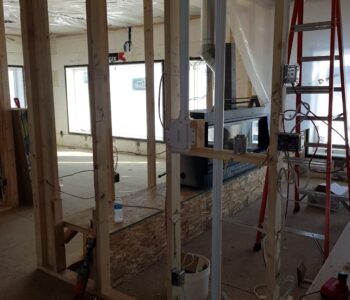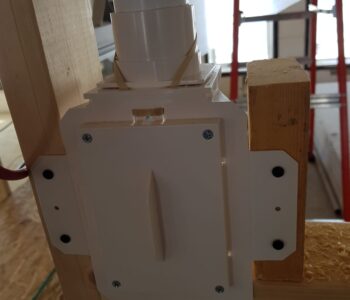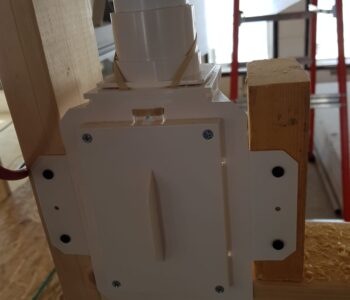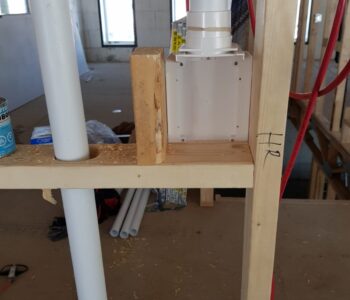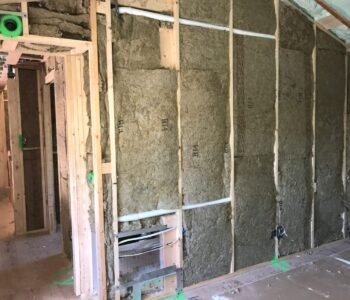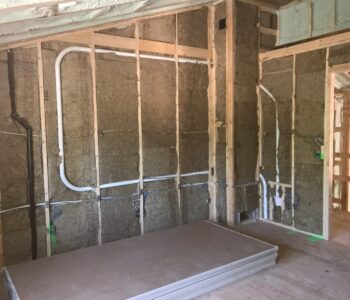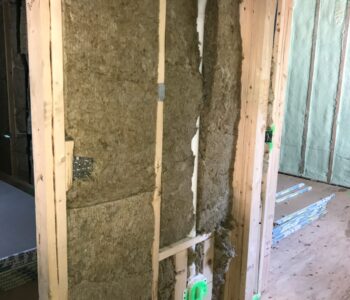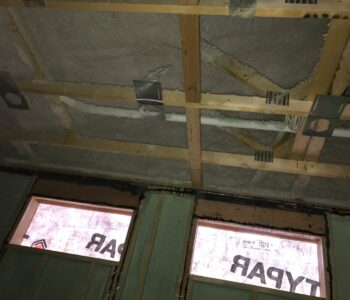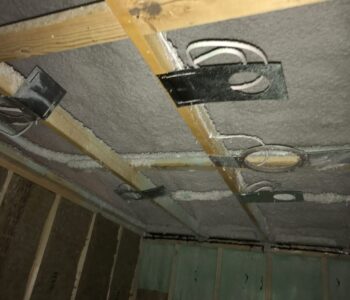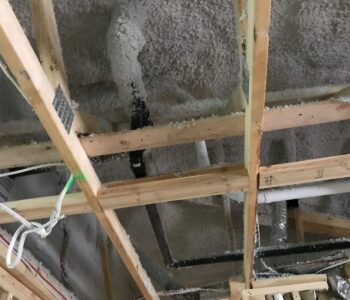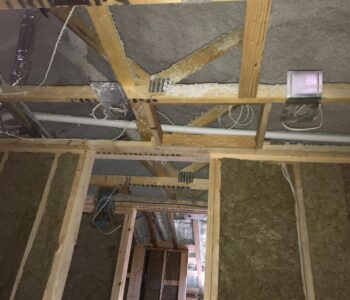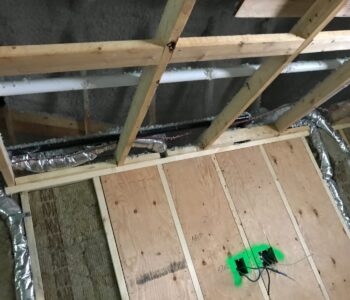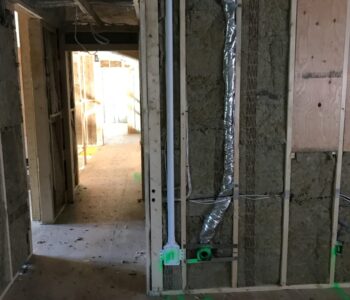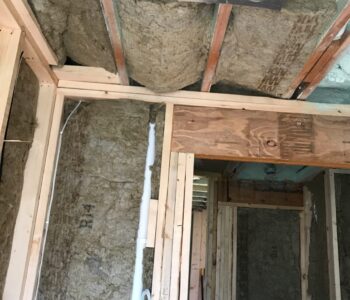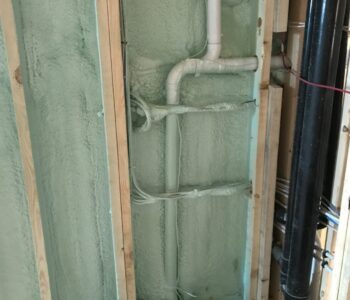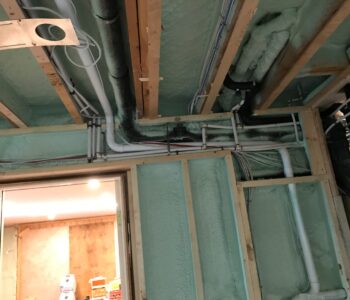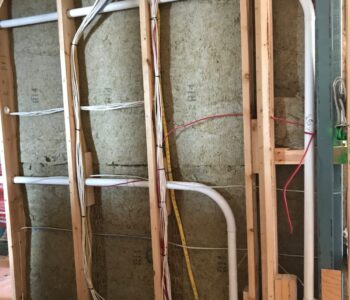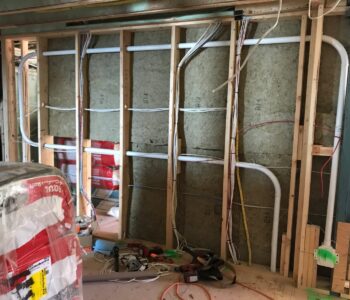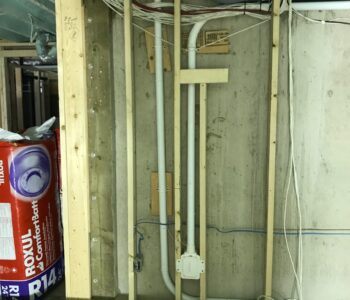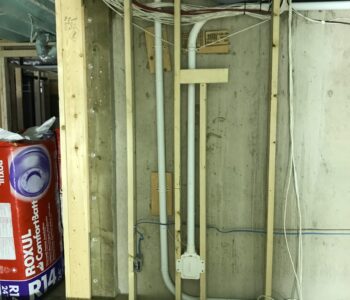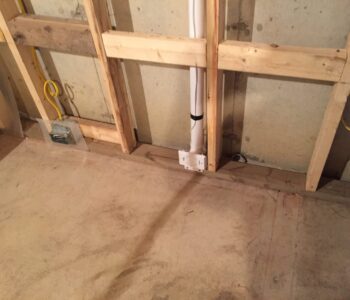Central Vacuums, Vacuflo & Built-in Vacuums Rough-in:
At Superior Vacuums Calgary we specialize in everything Vacuflo and Built-In Central vacuum systems, we do the rough in of the pipes, tie in and the installation of the Vacuum Unit. If you’re building a home it is our advice to rough in the Vacuflo Central vacuum system even if you’re not going to use it. Running the pipe before drywall is installed is much easier with very minimal cost than doing it after the home is completed.
Installation of a Hide-A-Hose system
Installation of a Hide-A-Hose system requires extensive planning. A balance needs to be maintained between the best locations for the inlet valves and the practicality of installing in these locations. With a little ingenuity most locations can be reached.
Unlike a traditional central vacuum install pipe runs need to long enough to be able to hold the total length of hose. For example, if using a 40’ hose we need to install at least 44’ of pipe before connecting to another pipe run in order to ensure enough pipe to store the hose. The pipe runs will sometimes need to begin running away from the power unit, then make a loop and head back to the power unit. This can be done with great ease during the home building stage before any drywall is installed and can be much more cost effective. At Superior Vacuums our technicians possess the skills, expertise and experience to accommodate any type of installation.
For more Information give us a call: (403) 282-0340
Home Wiring for New Homes
Home Automation / Security / Surveillance System
Home wiring is needed to interconnect parts of all home automation, security and surveillance systems. Multiple panels may need wiring to variable components throughout the premises just as power, telephone, and any other input or output devices you may need.
At Superior Vacuums we recommend installing all home automation, security and surveillance system wiring during the construction phase of the house, referred to as rough-in. Most alarm / surveillance monitoring companies prefer a prewired roughed-in system as it makes installation of any system much easier and much more cost effective.
With all the framing exposed, it’s easy to drill holes, run alarm wires / low-voltage automation cables / Cat5e and install mud rings or boxes wherever they may be needed. This also makes it easy to co-ordinate with the electricians on any special power or lighting connections for the alarm system.
Rough-in is also a good way to “future-proof” the home. You can run extra cables for options you don’t need now but may want in the future. This might include additional keypad locations, motion detectors, home automation and lighting control, etc.
Running any type of wiring in an existing house generally takes much more time and effort than Rough-in. Fishing wires can be difficult, and some areas of a house may not be accessible at all. Call us today to find out how we can help (403) 282-0340
Here are some answers to questions asked by clients that we find are very useful:
Can I rough in the Vacuum System after drywall is completed?
The answer is yes however the outlet locations will not be as ideal as if the rough in was done before the drywall is installed. This must be done by professionals to give you the best result and maximum performance.
Does the entire system have to be roughed in and installed at one time?
No. Some home owners choose to rough-in the tubing system when a home is being built and then complete the system by adding the power unit and inlet valves at a later time.
Will I need an inlet valve in every room?
No. For maximum cleaning convenience and whole-house coverage, inlet valves are strategically placed throughout the home. You can estimate one inlet valve for every 600 square feet of living space. The average home (2000 sq. ft.) would need 3 to 4 inlets depending on the layout.
Sq. ft. of home/600 = # of inlet valves. Our Central Vacuums provide whole-house cleaning coverage with as few inlet valves as possible. Tubing and low-voltage wiring are run in tandem to each valve location, speeding up installation.
What is the standard height for locating the inlet valve?
Valves are typically ascended at the same height as electrical receptacles.
Where the power unit is typically located?
The power unit is typically located in a garage, basement or utility room.
How much tubing do I need per inlet valve?
Each valve will use roughly 20′ of tubing.
90 short elbow vs. a 90 sweep elbow usage?
A 90 short elbow (also called a 90 adapter elbow) is outlined to use at each inlet valve position. The tight 90 acts as a trap for debris that might be too big to pass entirely through the tube system.
How many square feet will one valve cover?
One valve will cover roughly 600 square feet of living space. This guess is based on using a standard 30′ hose. If a hose which is shorter is used, more valves are required.
Do systems need to be blown out once in a while?
Central vacuum systems pipe do need to be cleaned out once a year or so, this of course depends on the average user and what’s been vacuumed (dust, debris, construction dirt).
Does the system need to be vented outside the house?
This always depends on the type of filtration you have inside the machine, Bagged machines don’t need venting as all dirt is contained inside the bag. Bagless vacuums do need to be vented outside for better Air Quality inside the house.
Where do I run the Main line?
The Main line will run either in the surface or in the attic. The line should run as straight as possible with the least amount of bends from the power unit position to the significant inlet valve.
